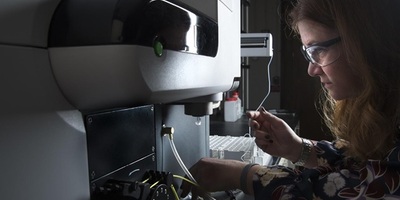Innovation is the cornerstone of any business, improving customer experience with a product or service while broadening offerings. It is always the business that first captures consumers with methods to streamline operations or a product that fills a unique market need. This rule applies to all sectors, not just the tech industry.
To stay ahead of the pack, you need to innovate continually, necessitating a robust research and development (R&D) wing. Establishing and maintaining a vibrant R&D unit requires long-term commitment and substantial resources. In addition to increased revenue, you can look forward to R&D tax credits.
History of the R&D Tax Credit
The R&D tax credit was enacted in 1981 to foster innovation among industries in the United States. By facilitating innovation, the government hoped to stimulate economic growth and retain technical jobs that would otherwise have been outsourced to other countries, as was beginning to be the trend.
To enjoy the R&D tax credit at that period of its introduction, you had to create a product or introduce a process that was “new to the world.” The federal government loosened restrictions in 2003 to widen the bracket of potential beneficiaries and further encourage investment in R&D. Under the revised regulations, it was necessary to simply introduce a product or process that was “new to the taxpayer.”
In 2015, the Protecting Americans from Tax Hikes (PATH) Act was passed, enshrining the R&D tax credit into the federal tax code. In addition to allowing larger corporations to claim 75 percent of what they spend on engaging third party research bodies, the R&D tax credit allowed small businesses that don’t have a federal tax liability to claim the refund against their payroll tax.
How Do R&D Tax Credits Work For Me?
The R&D tax credit, according to section 41 of the Internal Revenue Code, applies only to taxes levied on money invested in qualified research activities performed within U.S. borders. What are these qualified research activities, or QRAs? They must meet the below criteria:
- They must be technological.
- They must lead to creating a new product or service of improved quality, functionality, or performance.
You will not be eligible for R&D tax credits if:
- The research you’re conducting has to do with humanities or social sciences.
- Your R&D is completed outside the U.S.
- Your R&D is not self-funded.
- You’re replicating a process or product already in existence.
- You’re conducting a survey.
You also need to note that the tax credit applies only to specific types of R&D-related expenditure. They include tangible assets (apart from land), contracted third parties who conduct research (including learning institutions and research institutes), and wages paid to specialized professionals.
Navigating the fine print of the IRC to ascertain whether or not your business qualifies can be a challenge if you don’t have any background in accounting. At this juncture, it would be prudent to consider scouting for services for business tax accounting.
Common Misconceptions About R&D Tax Credits
There are two groups of businesses that commonly misconstrue R&D tax credit eligibility—those that think they qualify for them but don’t and those who think they don’t qualify but do. You could miss out on these tax credits if you believe you might be disqualified because your business employs assistants to perform the actual work. But this is not the case; as long as you employ a certain number of degree-holding engineers or scientists, you can apply for R&D tax credits.
You also don’t have to have a dedicated R&D facility, like most larger companies, to be considered performing experimentation that leads to the introduction of an innovation. Proprietors of small businesses with gross incomes of less than $5 million that are not subject to federal income tax may feel they don’t qualify for this tax credit. But the tax credits can be applied to part of their payroll tax.
Get Help And Boost Your Margins
R&D tax credits can be a source of significant savings for your enterprise. If you’re a startup involved in unique service and product innovation, you could be sitting on a golden egg—the funds you needed to facilitate expansion or research in a new field. Consult a business tax pro, and they will help you connect the dots and assess how your activities could benefit your company.
